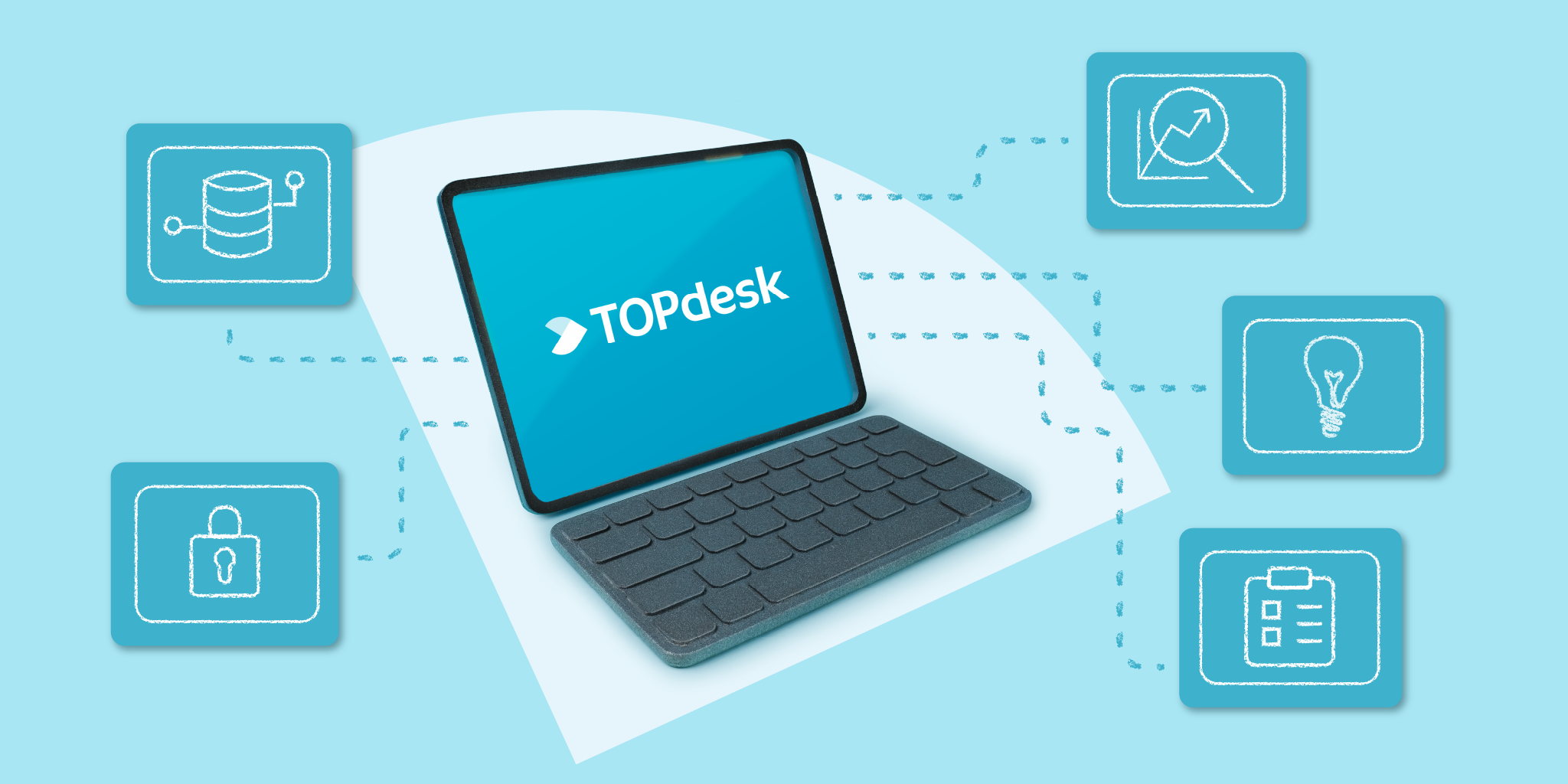How ITSM automation transforms your IT service desk

If you're running an IT department, these three goals are probably pretty high up your agenda: 1. Becoming more efficient, 2. Reducing manual effort, and 3. Improving service delivery. Well, we come bearing good news. ITSM automation is here and it’s helping companies like yours to rise up and tackle not one, not two, but all three of these goals. We appreciate that you might be feeling skeptical about this, but in this article, we’re going to do our best to convince you that automation in ITSM is a productivity game-changer.
What is ITSM automation?
Let’s begin by defining our terms. IT service management—or ITSM—is the name you give to the strategy companies like yours have in place to manage the processes and tools that make IT teams’ lives more efficient. These could include your IT team’s go-to approach for managing service requests, fixing issues, and keeping customers happy. As you might expect, we’ve written extensively about ITSM—read our full breakdown of what ITSM is if you’d like a deeper dive.
According to IBM, automation is the application of technology, programs, robotics or processes to achieve outcomes with minimal human input. From that definition, you might be able to see how automation in ITSM is a natural fit. ITSM ops are naturally process-oriented and consist of multiple touch-points. It only makes sense—given that businesses exist to make profit—to ensure your processes are as efficient as possible.
Service automation, implemented through ITSM software, can be a powerful tool to do just that. It can transform your ITSM-related processes into a slick, well-oiled machine that is efficient, cost-effective and frees up your IT team from dull, repetitive tasks that absorb their time, and limit their capacity to proactively solve problems. Just think how much time incident management currently takes up in your company. ITSM software and service desk automation can put an end to the endless tail-chasing and give your IT team an opportunity to breathe.
Want to dive deeper into the tools that make automation in ITSM possible? Check out our ITSM software guide.
ITSM automation use cases
ITSM automation comes in a variety of shapes and sizes. Whether that’s automating your incident management, change approvals, or in the creation of self-service portals, automation in ITSM improves efficiency, reduces manual effort and enhances service delivery.
With ITSM software like TOPdesk, teams can harness automation without writing a single line of code, improve SLA performance, and empower users through smart self-service. By handling repetitive tasks automatically, TOPdesk frees up your people to focus on more strategic, high-impact work.
Read more about what five everyday tasks you could automate or explore TOPdesk's AI features in this webinar.
How Ferranti streamlined service delivery with ITSM automation
Now let’s look at how one of our clients, Ferranti, an energy software provider, streamlined their internal IT support services by finding a smarter way to manage internal requests. With over 54 customers in more than 18 countries, Ferranti’s main roadblock was manual processes that were time-consuming, inconsistent, and hard to scale as the business grew.
By partnering with TOPdesk, Ferranti implemented service automation that replaced scattered email chains and manual handoffs. Automation played a central role in Ferranti’s transformation. Repetitive tasks, like password resets and onboarding requests, were handled automatically, using Action Sequences, freeing up time for support teams to focus on more complex issues—a big win.
The results? Ferranti saw significant improvements in response times and resolution rates. Thanks to Action Sequences and service automation, internal teams now spend less time managing emails and more time solving problems. This shift not only improved operational efficiency but also boosted employee satisfaction.
Today, Ferranti’s employees enjoy a smooth, consistent experience across multiple service areas, powered by automation. Their story is a powerful example of how automating simple processes can deliver real value across an entire organisation. To standardize how your team approaches IT service management, have a peak at our ITSM platform.
The human side of ITSM automation: empowering, not replacing your team
Let’s be honest: the word “automation” can sometimes make IT professionals feel a little uneasy. There’s a fear that machines are going to swoop in, take over, and render the human side of IT obsolete. But automation in ITSM isn’t about replacing your team. It’s about empowering them.
Think of it this way: your team’s time is too valuable to be wasted resetting passwords, reassigning tickets, or responding to the same question for the hundredth time. These aren’t the tasks they signed up for, and they’re certainly not where they add the most value. Automation handles the repetitive, time-sapping stuff so your team can focus on what really matters: solving complex problems, improving systems, and proactively delivering better service.
When Ferranti automated routine requests, it freed up brains. Their IT team could finally step away from the backlog and start thinking more strategically. Morale went up. Job satisfaction increased. And crucially, the business started to benefit from a team that had the time and space to innovate.
So yes, automation does save time and cut costs, but let’s not overlook the human benefits. Your people are your biggest asset. Let’s help them do the work that energizes them.
ITSM automation: beyond efficiency
Most conversations around ITSM automation centre on speed and savings. And fair enough—those are big benefits. But there’s another layer that often gets missed: automation is also an engine for continual improvement. When your processes are automated, every action generates data. Patterns emerge. You start to see which issues crop up again and again, which services get the most requests, and where tickets tend to get stuck in the system. And once you can see those patterns? You can fix them.
Automation doesn’t just help you deliver services faster, it helps you deliver them better. Automatically triggered surveys can capture feedback in real time. Built-in analytics can show you which teams are under pressure and which processes need fine-tuning. And automated workflows ensure that improvements don’t just sit in a document—they get rolled out and embedded, instantly. Automation turns ITSM from something static into something that grows, learns and can evolve.
Building the business case for ITSM automation: metrics that matter
If you’re sold on the benefits of ITSM automation but need to convince the rest of the business, this section’s for you. Let’s talk numbers.
Automation isn't just about making your life easier, it delivers the measurable results that matter to your leadership. Here are a few service desk KPIs worth tracking:
- Resolution time: How much faster are tickets being resolved now that routing and triage are automated?
- Manual workload reduction: How many hours per week have been saved by automating repetitive tasks like password resets?
- First-time fix rate: Are automated categorisation and routing improving the quality of responses?
- Service desk satisfaction: Are users getting quicker responses? Are agents more engaged?
- Scalability: Can you handle more requests with the same headcount?
When Ferranti rolled out automation with TOPdesk, they didn’t just report internal wins, they had the numbers to back them up. Fewer emails. Faster responses. Better visibility across departments. That’s the kind of evidence that gets buy-in from decision-makers.
So if you’re putting together your business case for ITSM automation, don’t just talk about possibilities. Show the proof.
Final thoughts on ITSM automation
Automation in ITSM isn’t just about doing things faster, it’s about doing them smarter. When you reduce repetitive tasks and improve service quality, you boost team morale. This is real and measurable change. When you get it right, automation can be the launchpad for broader change across your organisation.
Start small. Focus on what drains your team’s time. Measure the impact. Then scale. Because with the right approach, automation doesn’t just support your IT service desk—it transforms it.
Related reading: more on ITSM automation
- Service automation 101: boost efficiency and cut costs: a broader look at service automation across departments.
- Are password resets draining your IT department? Explore how automating one of the most common IT tasks can save your service desk time and reduce ticket volume.
- Chatbots for service desks: boosting ITSM efficiency and satisfaction. Discover the benefits of chatbot automation for first-line support and user experience.
- 5 IT tasks you should be automating. Not sure where to start? This guide covers the most impactful automation opportunities for IT teams.
- Smarter incident management: 5 examples of service desk automation.
Inspire others, share this blog


